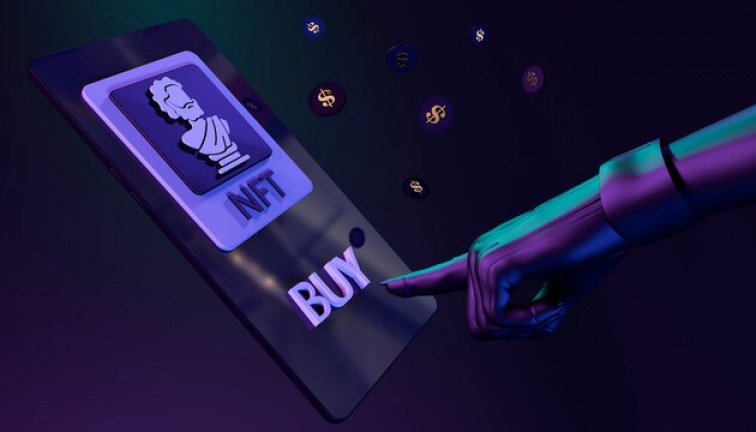The world of Non-Fungible Tokens (NFTs) is a vibrant ecosystem where digital assets find unique representation on the blockchain. As the popularity of NFTs continues to soar, the development of robust NFT exchange platforms becomes crucial in providing users with a seamless and secure environment for trading and owning these one-of-a-kind assets. In this comprehensive guide, we will explore the essential components and strategies involved in building NFT exchange platforms, emphasizing the importance of creating bridges between creators, collectors, and the broader digital community.
Understanding the Foundations of NFT Exchange Platforms
NFTs, as unique and indivisible tokens on the blockchain, represent ownership of digital or physical assets. NFT exchange platforms serve as marketplaces where these tokens can be bought, sold, and traded. Ethereum, with its robust smart contract capabilities, has been a primary blockchain for NFT development, although other blockchains are gaining traction for their unique features and scalability.
Key Components of NFT Exchange Platform Development
Smart Contracts: At the core of NFT exchange platforms are smart contracts. These self-executing contracts facilitate the creation, transfer, and verification of NFT ownership. Developers commonly use languages like Solidity to build these contracts on blockchain networks.
User Authentication and Security: Security is paramount in NFT exchange platforms. Implementing robust user authentication mechanisms, two-factor authentication, and encryption protocols help safeguard user accounts and their digital assets.
User Interface (UI) and User Experience (UX): A well-designed and intuitive user interface is essential for attracting and retaining users. The platform's overall user experience, including easy navigation, responsive design, and a streamlined onboarding process, contributes significantly to its success.
Wallet Integration: Seamless integration with cryptocurrency wallets is crucial for users to manage and transfer their NFT holdings securely. Compatibility with popular wallets, such as MetaMask and Trust Wallet, enhances accessibility.
Marketplace Functionality: The marketplace is the heart of an NFT exchange platform. Efficient order book management, trading pairs, and features like auctions and bidding contribute to a dynamic trading environment.
Liquidity Management: Ensuring liquidity in the marketplace is vital for a thriving exchange. Developers need to implement effective liquidity management strategies, including liquidity pools and mechanisms to reduce slippage.
Scalability: As the NFT market continues to grow, scalability becomes a critical consideration. Choosing a blockchain with high throughput and low transaction fees is essential for handling increased user activity.
Strategies for Successful NFT Exchange Platform Development
Market Research and Target Audience Analysis: Understanding the target audience and market dynamics is foundational. Conduct in-depth market research to identify user needs, preferences, and potential competitors.
Community Engagement and Marketing: Building a strong community around the NFT exchange is crucial for its success. Engage with potential users through social media, forums, and community events. Strategic marketing efforts can help create buzz and attract users.
Legal Compliance and Regulations: Navigating the legal landscape is imperative. Stay informed about regulatory requirements related to cryptocurrency exchanges and ensure compliance to establish trust with users and regulators.
Collaborations and Partnerships: Forge partnerships with artists, creators, and influencers to diversify the content on the platform. Collaborations can also enhance marketing efforts and attract a broader user base.
Education and Onboarding: NFTs and blockchain technology may be new concepts for some users. Providing educational resources and ensuring a smooth onboarding process can make the platform more accessible to a wider audience.
Innovative Features and Token Offerings: Differentiate the platform by introducing innovative features such as fractionalized NFTs, social token integrations, or unique token offerings. These features can create excitement and drive user engagement.
Emerging Trends in NFT Exchange Platform Development
Cross-Chain Compatibility: NFT exchange platforms are exploring cross-chain compatibility to allow users to trade assets across different blockchain networks, enhancing interoperability and providing users with more choices.
Sustainability Initiatives: With increasing concerns about the environmental impact of blockchain technology, some platforms are exploring eco-friendly alternatives and implementing sustainability measures.
Integration with DeFi: The integration of decentralized finance (DeFi) features, such as staking and lending, into NFT exchange platforms provides users with additional financial opportunities and enhances the overall ecosystem.
Enhanced Social and Community Features: Platforms are integrating enhanced social and community features to facilitate interactions among users, creators, and collectors. This includes features like chat, forums, and community-driven events.
Conclusion: Building Bridges for a Thriving NFT Ecosystem
In conclusion, the development of NFT exchange platforms involves a careful orchestration of technological, strategic, and user-centric elements. By understanding the essentials of NFT exchange platform development, embracing innovation, and staying attuned to emerging trends, developers can build bridges that connect creators with collectors and foster a thriving NFT ecosystem. As the NFT space continues to evolve, those who navigate these essentials skillfully are poised to contribute significantly to the growth and sustainability of this transformative digital asset landscape.


No comments yet